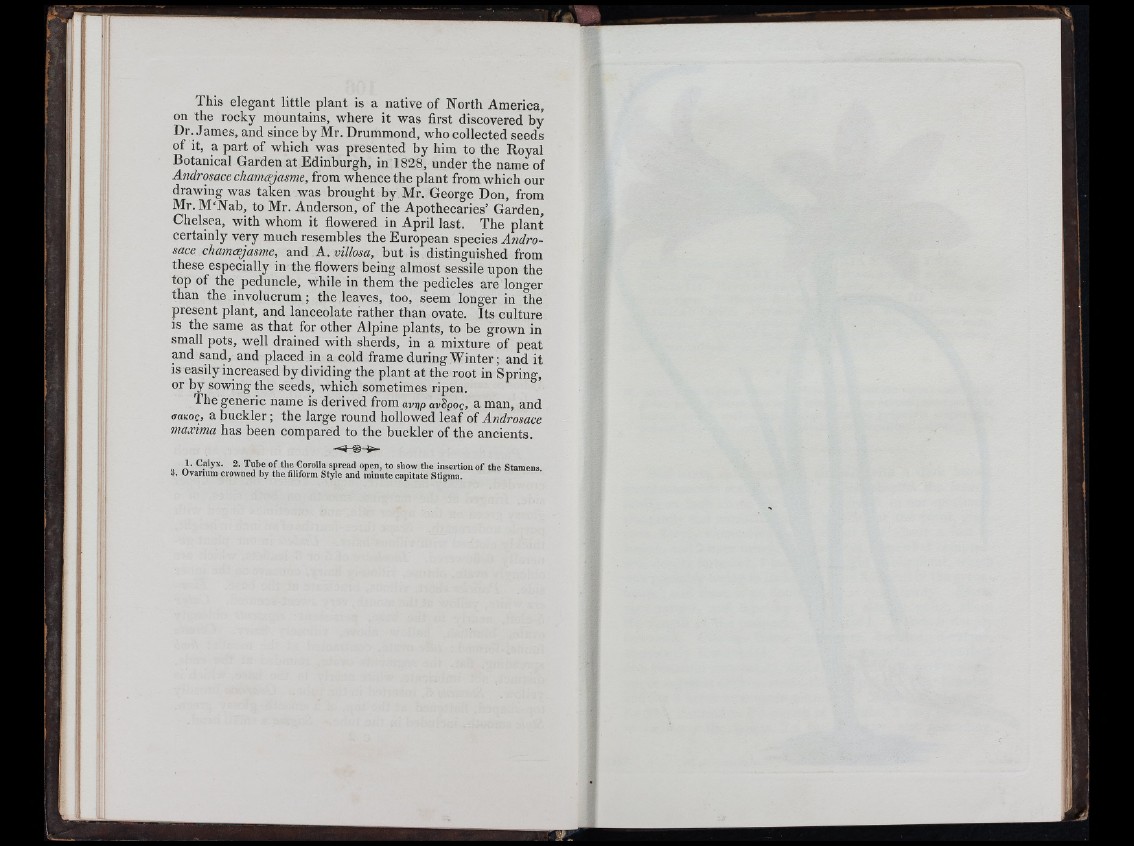
This elegant little plant is a native of North America,
on the rocky mountains, where it was first discovered by
Dr. James, and since by Mr. Drummond, who collected seeds
of it, a part of which was presented by him to the Royal
Botanical Garden at Edinburgh, in 1828, under the name of
Androsace chamcejasme, from whence the plant from which our
drawing was taken was brought by Mr. George Don, from
Mr. M‘Nab, to Mr. Anderson,"of the Apothecaries’ Garden,
Chelsea, with whom it flowered in April last. The plant
certainly very much resembles the European species Androsace
chamcBjasme, and A. villosa, but is distinguished from
these especially in the flowers being almost sessile upon the
top of the peduncle, while in them the pedicles are longer
than the involucrum; the leaves, too, seem longer in the
present plant, and lanceolate rather than ovate. Its culture
is the same as that for other Alpine plants, to be grown in
small pots, well drained with sherds, in a mixture of peat
and sand, and placed in a cold frame during Winter; and it
is easily increased by dividing the plant at the root in Spring,
or by sowing the seeds, which sometimes ripen.
The generic name is derived from avyp avSpoe, a man, and
<7aKoe, a buckler; the large round hollowed leaf of Androsace
maxima has been compared to the buckler of the ancients.
1. Caly x . 2 . Tube o f the Corolla spread open, to show the insertion o f the Stamens.
3. Ovarium crowned by the filiform S ty le and minute capitate Stigma.